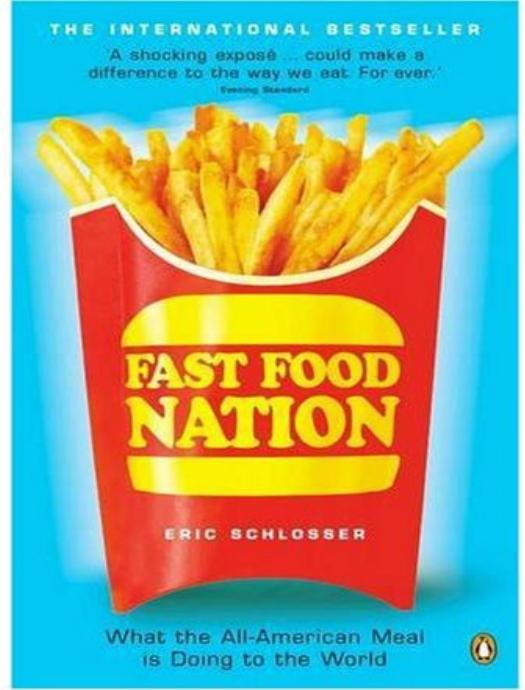Fast Food Nation by Eric Schlosser

Author:Eric Schlosser [Schlosser, Eric]
Language: eng
Format: epub, mobi, pdf
Tags: Industries, Technology & Engineering, Economics, Food habits, Cooking, Food Science, General, Travel & Tourism, Convenience foods, Hospitality, Business & Economics
ISBN: 9780141035314
Publisher: Penguin Books
Published: 2007-09-06T10:00:00+00:00
10/ global realization
WHENEVER I TOLD SOMEONE in Berlin that I was planning to visit Plauen, I got the same reaction. It didn’t matter whom I told — someone old or young, hip or square, gay, straight, raised in West Germany, raised in the East — there’d always be a laugh, followed by a look of slight amazement. “Plauen?” they’d say. “Why would you ever want to go to Plauen?” The way the name was spoken, the long, drawn-out emphasis on the second syllable, implied that the whole idea was vaguely ridiculous. Located halfway between Munich and Berlin, in a part of Saxony known as the Vogtland, Plauen is a small provincial city surrounded by forests and rolling hills. To Berliners, whose city is the present capital of Germany and perhaps the future capital of Europe, Plauen is a sleepy backwater that sat for decades on the wrong side of the Berlin Wall. Berliners regard the place in much the same way that New Yorkers view Muncie, Indiana. But I found Plauen fascinating. The countryside around it is lush and green. Some of the old buildings have real charm. The people are open, friendly, unpretentious — and yet somehow cursed.
For decades Plauen has been on the margins of history, far removed from the centers of power; nevertheless, events there have oddly foreshadowed the rise and fall of great social movements. One after another, the leading ideologies of modern Europe — industrialism, fascism, communism, consumerism — have passed through Plauen and left their mark. None has completely triumphed or been completely erased. Bits and pieces of these worldviews still coexist uneasily, cropping up in unexpected places, from the graffiti on the wall of an apartment building to the tone of an offhand remark. There is nothing settled yet, nothing that can be assumed. All sorts of things, good and bad, are still possible. In the heart of the Vogtland, without much notice from the rest of the world, the little city of Plauen has been alternately punished, rewarded, devastated, and transformed by the great unifying systems of the twentieth century, by each new effort to govern all of mankind with a single set of rules. Plauen has been a battlefield for these competing ideologies, with their proudly displayed and archetypal symbols: the smokestack, the swastika, the hammer and sickle, the golden arches.
For centuries, Plauen was a small market town where Vogtland farmers came to buy and sell goods. And then, at the end of the nineteenth century, a local weaving tradition gave birth to a vibrant textile industry. Between 1890 and 1914, the city’s population roughly tripled, reaching 118,000 on the eve of World War I. Its new textile mills specialized in lace and in embroidered fabrics, exporting most of their output to the United States. The doilies on dinner tables throughout the American Midwest came from Plauen, as well as the intricate lace-work that set the tone of many upper-middle-class Victorian homes. Black-and-white postcards from Plauen before the Great War show
Download
Fast Food Nation by Eric Schlosser.mobi
Fast Food Nation by Eric Schlosser.pdf
This site does not store any files on its server. We only index and link to content provided by other sites. Please contact the content providers to delete copyright contents if any and email us, we'll remove relevant links or contents immediately.
Life 3.0: Being Human in the Age of Artificial Intelligence by Tegmark Max(4495)
The Sports Rules Book by Human Kinetics(3582)
ACT Math For Dummies by Zegarelli Mark(3559)
The Age of Surveillance Capitalism by Shoshana Zuboff(3413)
Blood, Sweat, and Pixels by Jason Schreier(3128)
Unlabel: Selling You Without Selling Out by Marc Ecko(2976)
Urban Outlaw by Magnus Walker(2947)
Hidden Persuasion: 33 psychological influence techniques in advertising by Marc Andrews & Matthijs van Leeuwen & Rick van Baaren(2772)
The Pixar Touch by David A. Price(2737)
Bad Pharma by Ben Goldacre(2724)
Project Animal Farm: An Accidental Journey into the Secret World of Farming and the Truth About Our Food by Sonia Faruqi(2656)
Brotopia by Emily Chang(2589)
The Content Trap by Bharat Anand(2489)
Slugfest by Reed Tucker(2413)
The Airbnb Story by Leigh Gallagher(2364)
Kitchen confidential by Anthony Bourdain(2299)
Coffee for One by KJ Fallon(2003)
Smuggler's Cove: Exotic Cocktails, Rum, and the Cult of Tiki by Martin Cate & Rebecca Cate(1978)
Beer is proof God loves us by Charles W. Bamforth(1915)
